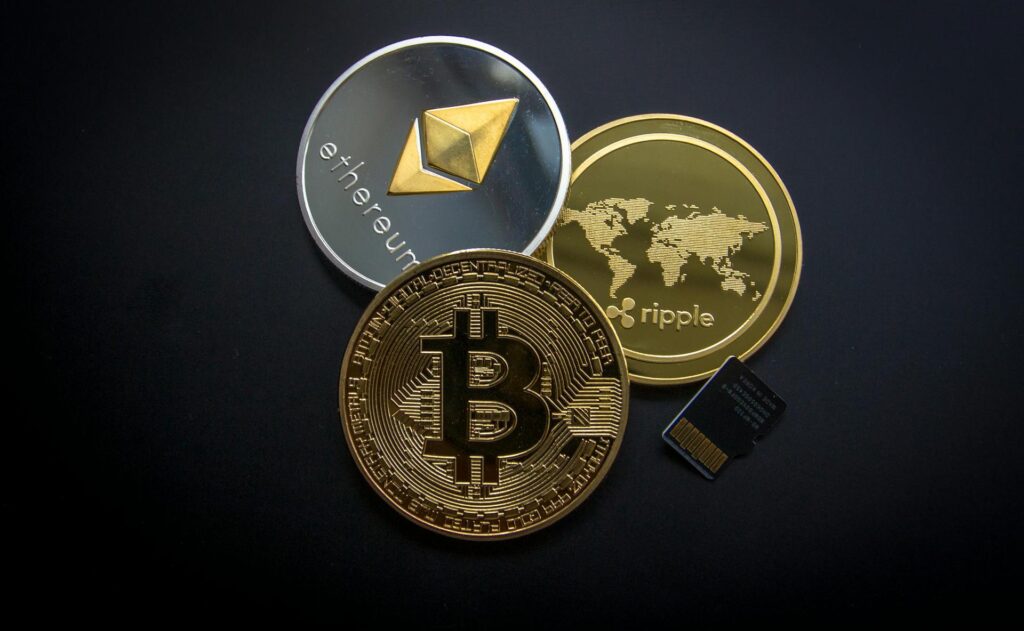Ripple Price vs. Bitcoin and Ethereum: Which Offers Better Opportunities in 2026


As the digital currency market matures, the constant comparisons between Ripple (XRP), Bitcoin (BTC), and Ethereum (ETH) still catch the attention of retail and institutional investors alike. Bitcoin and Ethereum have become the dominant cryptocurrencies, so to speak, but Ripple has maintained a niche presence – not by hype, but through real financial utility and an actual institutional adoption.
With that said, going into 2026, we ask the ultimate question: Which provides better opportunities to investors – Ripple, Bitcoin, or Ethereum?
Let’s do a deep dive into the fundamentals, price dynamics and growth opportunity to assess which cryptocurrency might be in the best position for the future.
Current market conditions of the cryptocurrency market
Right now the cryptocurrency market is shifting from speculation to utility adoption of cryptocurrencies. Central banks and governments are investigating adopting Central Bank Digital Currencies (CBDCs), institutional players are building networks on blockchain technology, and regulations are tightening – all factors to consider when evaluating the investment opportunity of Bitcoin, Ethereum and Ripple. .
Bitcoin, is the digital gold; the most adopted and decentralized cryptocurrency, and is primarily seen as a store of value.
Ethereum is the dominant player in decentralized finance (dFi) and smart contracts – supporting thousands of decentralized applications (dApps).
Ripple (XRP), on the other hand, is unique in that it is targeting large financial institutions for the purposes of cross-border payments, forming real partnerships and piloting with banks and payment providers around the world.
Ripple (XRP): The Unsung Hero
Ripple is a technology that is deliberately trying to address a critical global issue, cross-border payments need to be both fast and low cost. It has developed a payment network, RippleNet, that enables institutions to send money around the world quickly, in seconds instead of days like traditional banking systems.
As December 2025, Ripple’s ecosystem has seen positive momentum with:
Legal clarity after Ripple’s partial win against the SEC,
Strengthening partnerships with multiple central banks in Asia and the Middle East on cross-border payment corridors,
And growing usage of XRPL for tokenized assets in general and CBDCs in particular.
The ripple price has also had a historic tendency for it to be correlated with the price increases for Bitcoin and Ethereum – just with much less volatility. Ripple, and specifically XRP, can and already is being used for real-world use cases, which makes this value proposition more than speculative and appealing to investors who are looking for an asset with real-world utility and legitimate regulatory protection.
For entrepreneurs interested in crypto-backed business ideas or fintech business ideas, Ripple also offers insights as to how to date successfully proposed and planned in a strategically compliant manner
Bitcoin: The First Digital Asset
Bitcoin remains the standard for all cryptocurrencies. It’s decentralized, limited to 21 million coins, and uses proof-of-work consensus that ensures scarcity and security.
Despite Bitcoin’s notoriety of being “digital gold”, its limitations concerning transactions – long wait times and high fees – make it a less practical option for everyday payment than Ripple.
Key Bitcoin Strengths in 2026:
- Institutional adoption through ETFs and significant custodial platforms.
- Increasing understanding as an inflation hedge during global economic uncertainty.
- Continual network upgrades through Layer 2 structures like the Lightning Network, improving scalability and transaction speed.
However, when comparing Ripple Price vs. Bitcoin, XRP may still offer a better transactional utility, whereas Bitcoin maintains the upper hand in value retention and familiarity.
Ethereum: The Foundation for the Decentralized Internet
Ethereum is still thought of securely, for decentralized finance, NFTs and smart contracts. It’s recent move to proof-of-stake (PoS) via Ethereum 2.0 has significantly cut energy usage and increased its scalability.
Pros of Ethereum:
- Enables thousands of dApps and DeFi initiatives.
- Robust developer community generating ongoing innovation.
- Greater utility with tokenization, gaming, and Web3 use cases.
- Ethereum’s transaction costs (gas fees) and intermittent network congestion continue to create challenges. Ripple represents a simple and enterprise-driven solution to the intricacies of DeFi volatility.
In a diversified portfolio, Ethereum may occupy the role of innovation asset, Bitcoin may be identified as a store-of-value, and Ripple can be structured as a utility coin, creating a balance through exposure to speculative and practical value.
Price Predictions for Ripple, Bitcoin, and Ethereum
Let’s discuss anticipated opportunities that each coin could provide:
1. Ripple (XRP)
Therefore, Ripple’s future price will likely depend on adoption by institutions and regulations. With many partners around the globe and continued creation of utility via payments and remittances, analysis shows a reasonable expectation of XRP price moving up steadily rather than through speculative spikes.
2. Bitcoin (BTC)
The current and future value of Bitcoin (BTC) will rely upon macroeconomic cycles and institutional flow of funds. Some of the largest market analysts are predicting all-time highs upward of $100,000 – $150,000 for future Bitcoin prices in the year 2026, still assuming that inflation fears extend into the future.
As volatility increases, however, it is expected that Bitcoin will continue as a store of value, rather than a transactional currency.
3. Ethereum (ETH)
The future price of Ethereum (ETH) will be based on network efficiency and developer development activity. If scaling improvements can generate momentum in the coming years, ETH could rise to over $10,000 by the year 2026. They have a broad ecosystem that can support long-term valuation; however, competing chains may limit available upside.
Element Ripple (XRP) Bitcoin (BTC) Ethereum (ETH) Use Case Cross-border payments, CBDCs Store of value, hedge asset Smart contracts, dApps Transaction Speed 3–5 seconds 10–20 minutes ~15 seconds Scalability High Low–Medium Medium–High Volatility Medium High High Institutional Adoption Growing (banks, remittances) Widespread (ETFs, funds) DeFi and Web3 use Regulatory fit Improving Established Stable 2026 Outlook Utility-backed growth Inflation hedge Innovation-backed growth
Which one you might prefer?
It depends on your investment objectives.
Select Ripple (XRP) if you believe in utility-backed adoption, global payment solutions, and desired lower volatility exposure.
Select Bitcoin (BTC) if the intention is long-term value preservation and exposure to macroeconomic hedges.
Select Ethereum (ETH) if you were looking for innovation, and DeFi ecosystems of high upside with high equity risk.
Final Thoughts
The debate of Ripple Price vs Bitcoin represents more than the value of the pricing of each of the assets; it’s a tussle between utility and idealism in crypto. Bitcoin’s positioning is around decentralization and freedom from traditional finance, while Ripple’s positioning is about building efficiencies and innovation within the traditional finance system itself.
If we are working toward a future where regulation occurs and the financial system is able to interoperate, then XRP may be one of the largest performers with practical use cases. Bitcoin and Ethereum will continue to help build resilience and an evolving digital ecosystem.
Ultimately, in 2026 it may not just be about which cryptocurrency will be the go-to coin, but about how each cryptocurrency will be a building piece towards the establishment of a future of digital finance.
The post Ripple Price vs. Bitcoin and Ethereum: Which Offers Better Opportunities in 2026 appeared first on Entrepreneurship Life.








